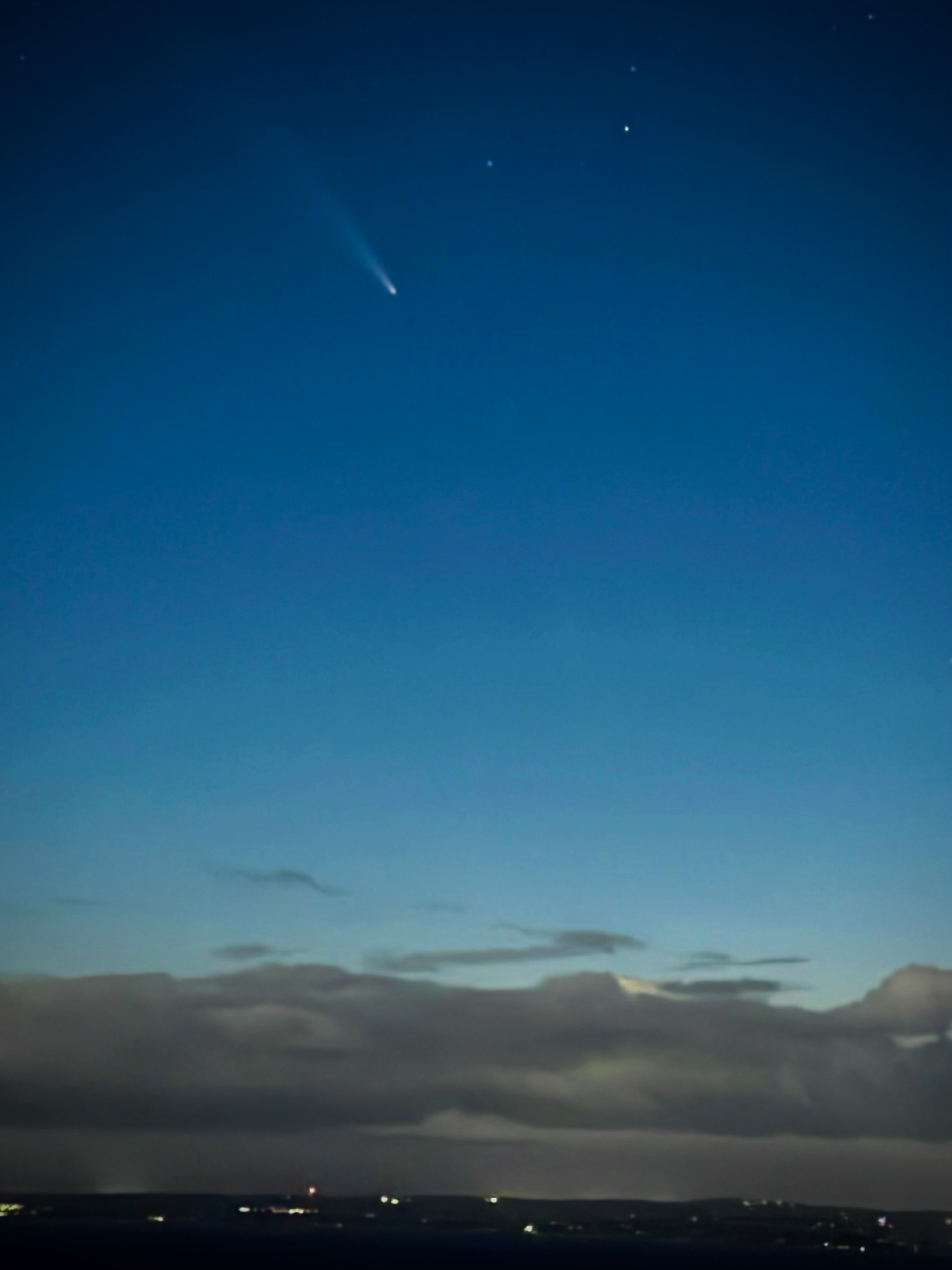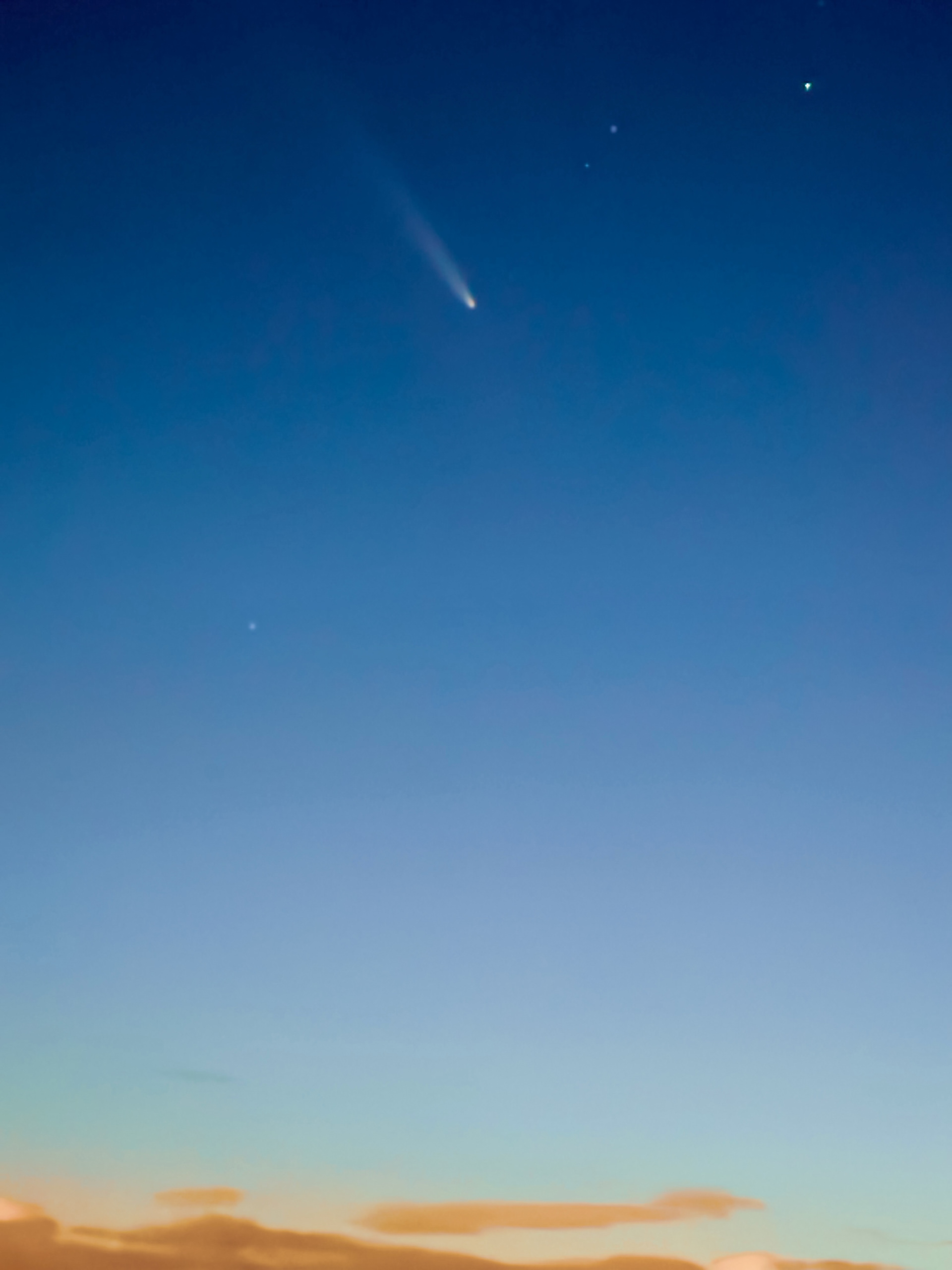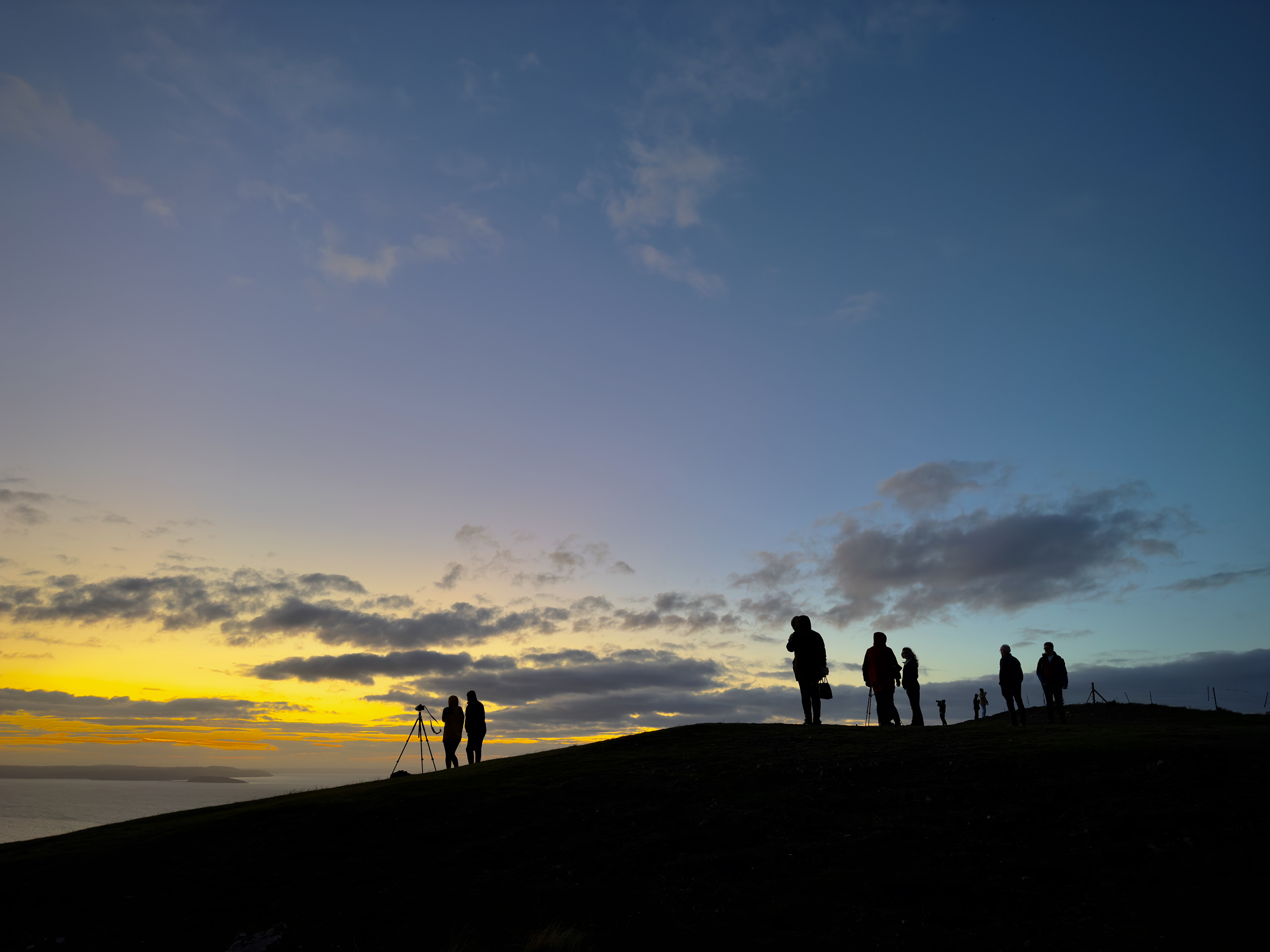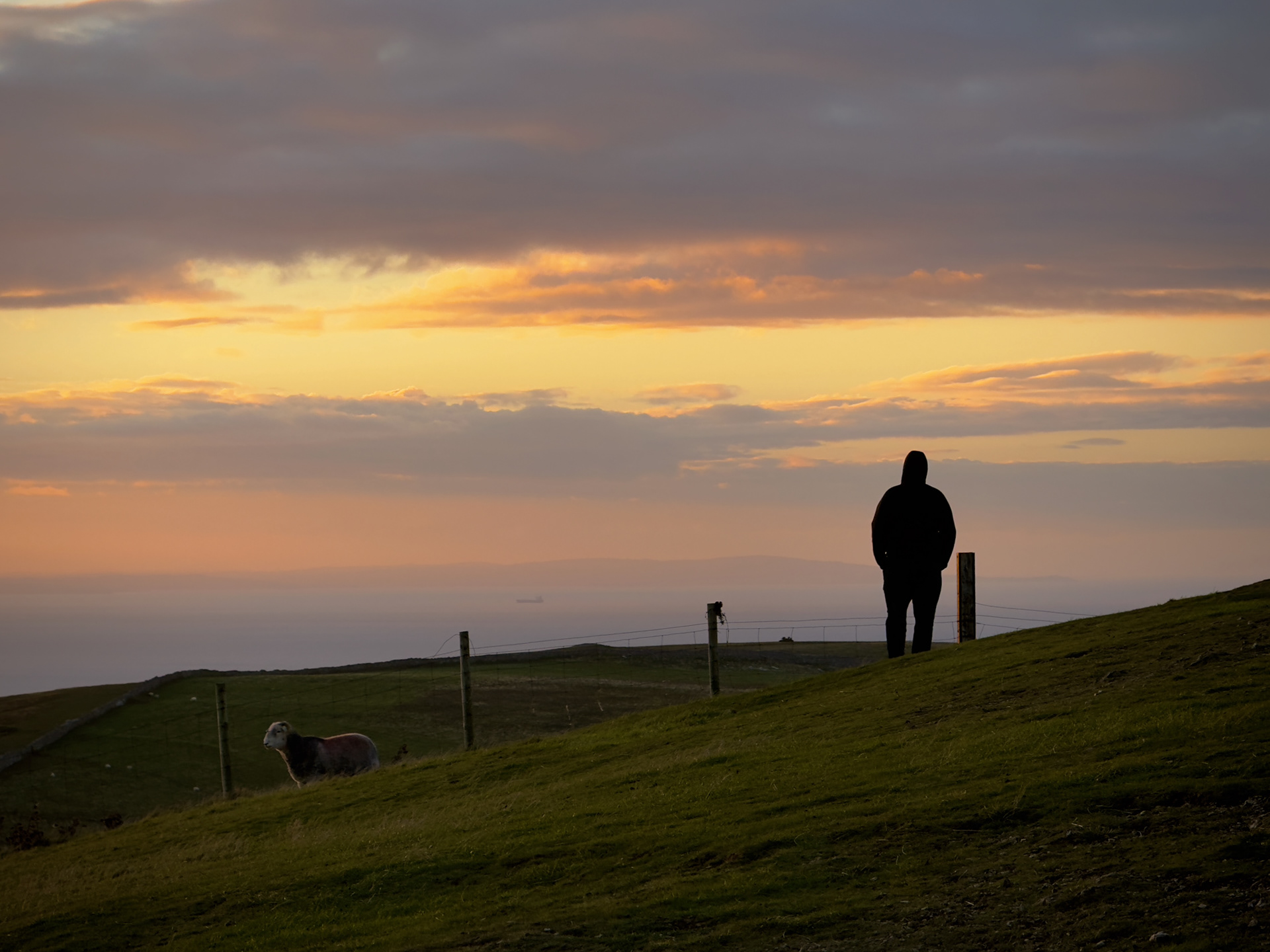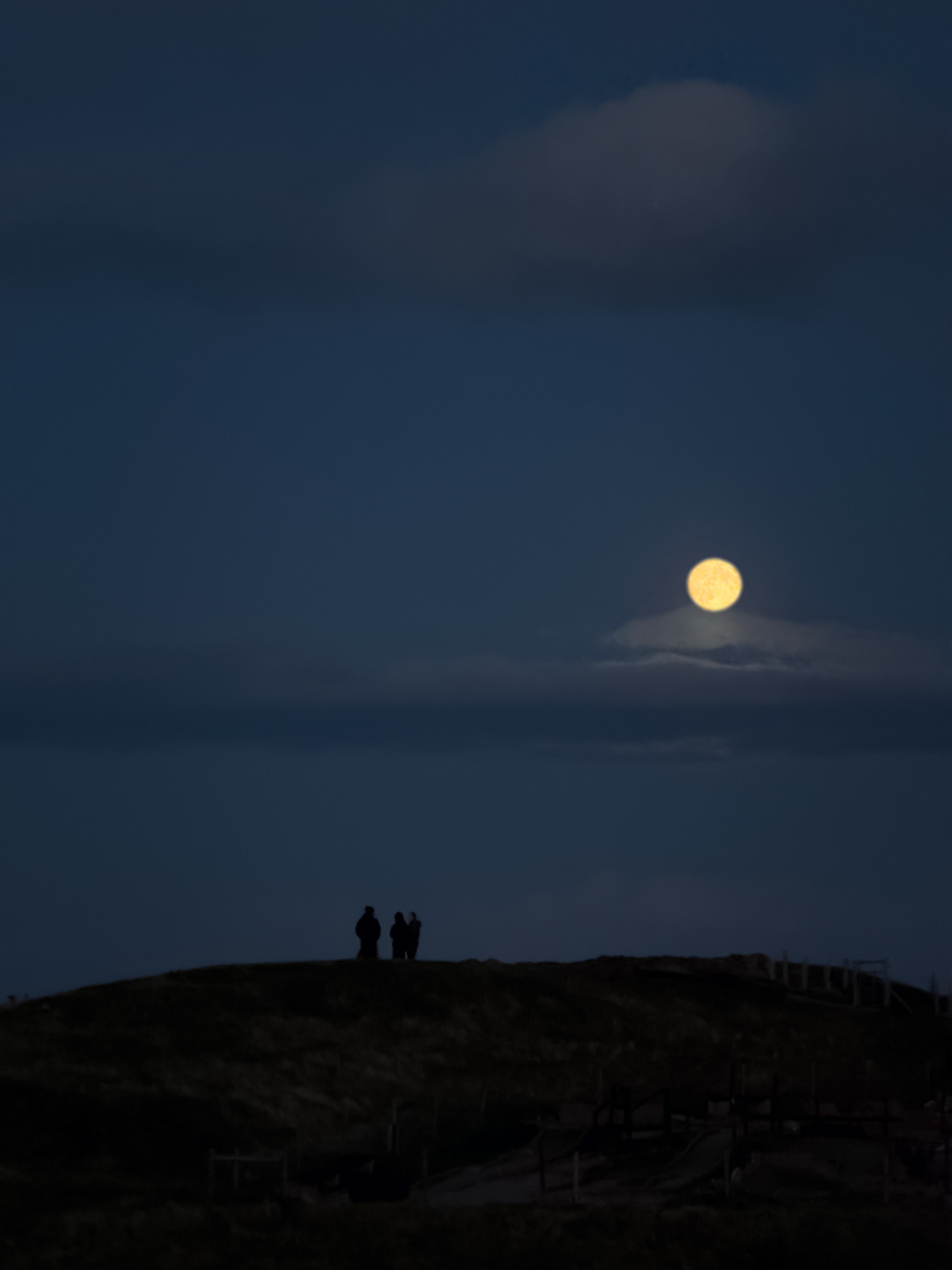Stargazing for Comet A3
With its lofty elevation, minimal light pollution, and expansive skies, a clear night on Llandudno's Great Orme Summit in North Wales is ideal for star gazing, Was this the night for something extraordinary? Anticipation buzzed among a small gathering of stargazers. Comet A3 (Tsuchinshan-ATLAS), hailed as the "comet of the century," was somewhere out there, last seen 80,000 years ago when Neanderthals walked the Earth — too good an opportunity to miss.
The sunset had kept me occupied, a bonus blend of soft pinks and purples bleeding into fiery orange. Even as darkness swallowed the horizon, the last remnants lingered as if the night couldn't quite let go of the day. And then the supermoon emerged — second fiddle tonight, perhaps, but still stealing the spotlight in its own way.
Time ticked by, hands and feet began to numb in the cold night air. Then, as if the night sky was giving us a nudge, Space X’s Starlink streaked above our heads, satellites in perfect formation, a quiet parade across the heavens. Awestruck, I blinked, too slow to catch it. Didn't manage a shot. Too fast, too slick. But no regrets, I wasn’t braving the cold for man-made objects tonight.
Then came the main event. Onlookers stirred, tripods secured, cameras readied, fingers pointed. We couldn't quite see it with the naked eye, but suddenly, there it was on my iPhone screen — Comet A3, an ancient celestial traveller journeying through the cosmos. A rare spectacle that connected us to the distant past, carrying with it the echoes of time, a fleeting glimpse of the wonder of the universe.
While my comet images may never grace the covers of astrology magazines, they’re still impressive for smartphone captures. Using my iPhone 16 Pro Max on a tripod, the extended Night Mode exposure (up to 10 seconds) produced shots that serve as a witness to this rare cosmic event—one that many will only read about in history books.
